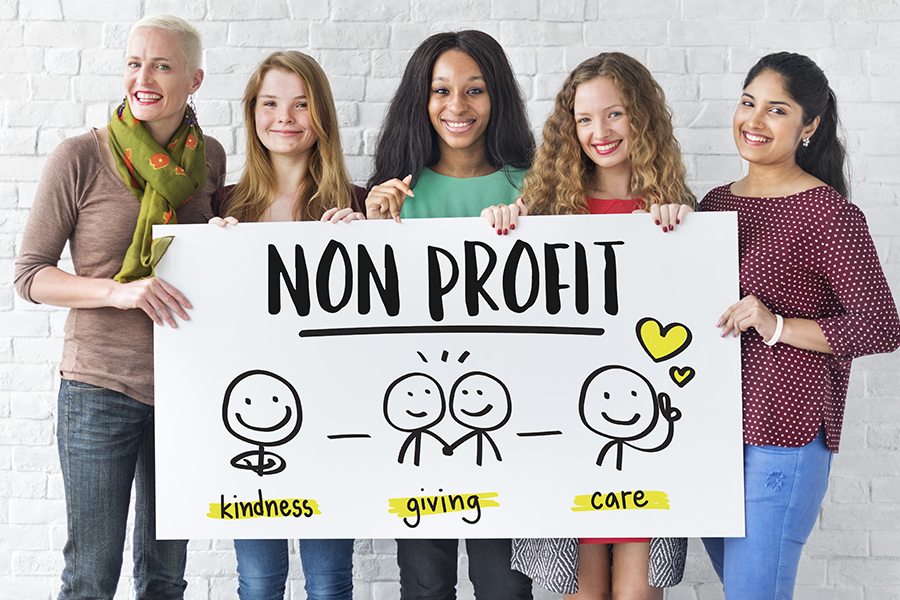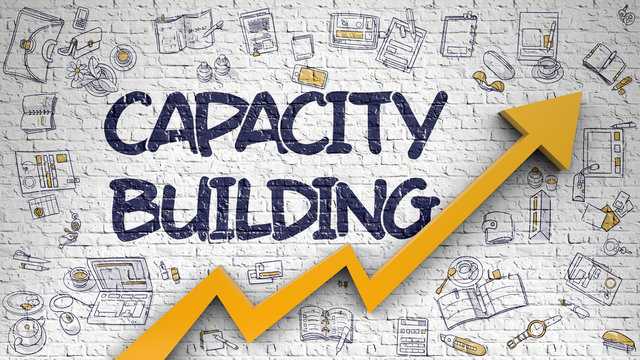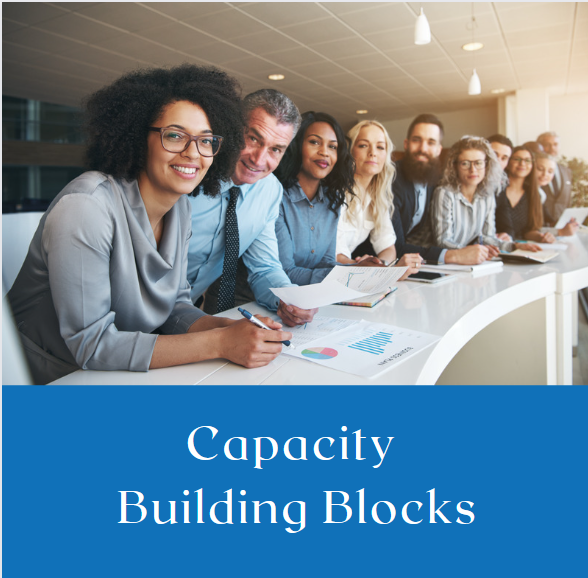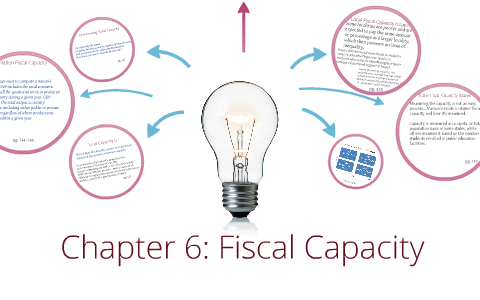What is Capacity Building for Nonprofit Organizations?

Have you ever accomplished something that you would have previously believed to be unlikely for you to accomplish? If so, you have firsthand knowledge of capacity building. Building capacity means enhancing the knowledge, abilities, techniques, and funds that communities and organizations require to survive, adapt, and thrive in a changing world. A transformation generated and maintained over time from within is a crucial component in building capacity; this kind of transformation goes beyond executing duties to changing attitudes and mindsets. Building capacity is as important as constantly improving; some may argue that it is a duty shared by NGOs, donors, and grant-makers.
A nonprofit needs to expand its capacity to reach the next building of organizational, programmatic, financial, or operational maturity to carry out its mission more successfully and effectively in the future. It is a continuous improvement strategic approach aimed at building a lasting and effective organization, not a one-time effort to increase short-term effectiveness.
Why is Capacity Building Important?

Building a nonprofit’s capacity ensures that it can carry out its mission today and, in the future, not just its present-day capacity. It is an investment in nonprofit efficiency and long-term viability.
A charitable nonprofit’s capacity to effectively carry out its mission is increased by various capacity-building initiatives, including developing a communications strategy, increasing volunteer enrollment, ensuring considerate leadership continuation, updating a nonprofit’s advanced technologies, and improving how it evaluates its results. When capacity building is effective, a nonprofit’s ability to carry out its goal over time is strengthened, improving its capacity to benefit people’s lives and communities.
Begin Building Capacity If:
Begin Your Capacity Building If You
- You started on a shoestring and with a dream.
- Your team was made up entirely of volunteers, and you had no funding.
- Demand keeps growing faster than building, which results in increased capacity.
- Your community partners highlight your success even though you haven’t yet conducted formal observations or evaluations.
- The expansion of your business was motivated by your enthusiasm for offering excellent services to your target demographic.
- You hired an attorney to assist you in filing the required papers and leased a place with just enough square footage.
- Although your volunteers have a background in programming, you have filed for and been awarded sizable funds. As a result, you have employed employees to assist the program’s administration.

Building Capacity: People
Building Capacity: People
Leadership
This refers to the efforts taken by your executives to maintain internal leadership, innovate operations, and keep the business on pace with its vision.
Internal and External Communications
Opportunities for professional growth in communication support internal and external objectives. Training provides opportunities for team building that emphasize the duty placed on staff by organizations to communicate their findings and procedures properly. It enables uniformity across audiences by enabling managers and executives to discuss their experiences and improve how they communicate about their job to the team. Employees learn new skills and behaviors that benefit both their employers and themselves.
Organizational Network
When building capacity, board members typically provide the first ideas for creativity and growth prospects. The key to capacity-building also involves the personnel. Group learning enhances memory retention and integrates the organization as a whole into the capacity-building process.
A consultant can frequently be used to help with capacity building. All the resources and efforts of nonprofit organizations are devoted to their activities and services. Given that this is how they started, it makes sense. Nonprofit leaders, however, need to devote time and resources to planning and visioning. A consultant can assist with the process organization. A consultant can help you expand your knowledge, abilities, and collaborations because they frequently bring expertise and a community of like-minded organizations. A consultant can identify hidden organizational strengths or vulnerabilities while working closely on a daily basis.
Engaged Board of Directors
The board is the primary and crucial component of capacity-building. Besides what internal factors can offer, the active board members offer the required knowledge, connections, and cash to help any organization. A proactive board that works to engage with the executive director on matters such as policies and fundraising is known as an engaged board.
Boards are actively involved in “work” between meetings and are well-prepared. They also cost less to enhance capacity than most other resources with a capacity-related function, like personnel, assets, and facilities. Time is included in the cost of capacity resources, and board members offer their own. Keep in mind that connected board members will assist the organization better and eventually increase organizational capacity in ways only a board can.

Building Fiscal Capacity
Fund Development
Setting aside a portion of your operational capital for a capacity-building project is an investment in your company’s future strength and potential. You might also ask grantmakers who want to make the most of their charitable contributions for specialized capacity-building assistance.
Financial Management
The capacity to manage resources ensures that they are all used effectively. It covers general human resource management and effective financial management to deal with the organization’s income, assets, and outlays.
Culture of Fundraising
Building a fundraising culture is the next strategy for increasing capacity. In many nonprofit organizations, the program team collaborates on activities while the development team concentrates on fundraising. It is recommended that fundraising become ingrained in your agency’s culture. If your organization has a strong fundraising culture, everyone—volunteers, employees, and board members—understands how important fundraising is to keep your work going. In the long run, the organization will be stronger if everyone remains motivated to support fundraising efforts.
Start the process of updating the entire organization about your fundraising efforts. When holding staff meetings, review what you’re doing before addressing how everyone at the table can assist. Encourage program personnel to share their experiences with success, difficulties, and impact. You will then tell donors and potential sponsors about these stories. You then begin a continuous process of demonstrating to the group how their contribution to fundraising is important.

Building Operational Capacity
Strategic Plan
An organization needs a clear vision and goal to remain rooted in its operations. Additionally, by strategically preparing, you can ensure that your efforts align with your goals. This improves leadership and resilience since it brings people together to work toward shared objectives.
Technology
This relates to the expertise, aptitude, equipment, and resources required to generate the intended result or delivery. Depending on your sector, these might include business and fundraising abilities, technological know-how, relevant digital capabilities, and program design and execution abilities.
Effective and Efficient Operations
To assist companies in accomplishing the goals mentioned earlier, it is essential to comprehend the characteristics and components of organizational efficiency. Corporate sponsors, capacity builders, and organizations frequently emphasize the process of capacity building more than its results. The efficacy and focus of capacity-building activities can be supported by a better understanding of the factors contributing to organizational effectiveness. Building organizational effectiveness capacity has attracted much attention over the past ten years. Leading intellectuals in this field have created a variety of lenses for viewing the subject.
Commitment to Data
Deep database digs and dedication to data may be thrilling. Regardless of whether you think you understand your database, such as the backside of your hand or not; you will unquestionably profit from a method of doing deep research into your database.
To get an idea:
- Run several searches on terms like “pure donations,” “amount,” “stock,” “frequent,” “days,” or “events.”
- Remember that different organizations grant money differently, so do your research thoroughly.
- Focus on your plan for interacting with these donors as you produce these reports.
- Sort them into email, phone, and face-to-face categories.
- Seeking out project leaders you might not know or who you may have never even noticed on a list will help you grow your capacity.
The significance of sustainable growth in company and charity operations has been clear to us in recent years. Building an organization’s capacity entails doing whatever is required to take it to the next level of functional, financial, and organizational resilience so it can successfully carry out its mission and endure adversity. Building capacity is an investment; like any investment, it needs to be focused on producing outcomes. You may better focus on capacity building by using resource management software’s analytical insights and scalability.
Capacity Building with a Consultant
A consultant can frequently be used to help with capacity building. All the resources and efforts of nonprofit organizations are devoted to their activities and services. Given that this is how they started, it makes sense. Nonprofit leaders, however, need to devote time and resources to planning and visioning. A consultant can assist with the process organization. A consultant can help you expand your knowledge, abilities, and collaborations because they frequently bring expertise and a community of like-minded organizations. A consultant can identify hidden organizational strengths or vulnerabilities while working closely on a daily basis.
